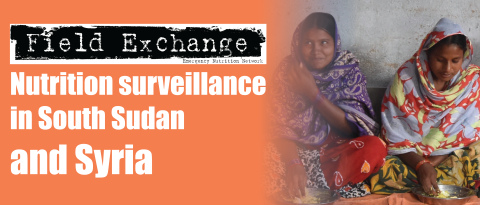An innovative, low-cost tool for a more efficient weight-for-height/length (WHZ/WLZ) assessment
By Yared Abebe, Zelalem Abera, Figsum Aregawi, Solomon Berhane, Taye Wondimu, Bayleyegn Bimerew and Mengesh Bahreselasie
Yared Abebe is a medical doctor and Senior Nutrition Advisor for USAID Transform.
Fitsum Aregawi is a Nutrition Officer for USAID Transform: Primary Health Care Project.
Solomon Berhane is a Nutrition Officer for USAID Transform: Primary Health Care Project.
Taye Wondimu is a Nutrition Expert in Oromia regional health bureau.
Bayleyegn Bimerew is a Nutrition Expert in Amhara regional health bureau.
Zelalem Abera is a Nutrition Officer in USAID Transform: Primary Health Care Project.
Mengish Bahreselasie is a Nutrition Expert in Tigray regional health bureau.
This study was supported financially by USAID Transform: Primary Health Care Project. We also thank Heran Demesie, Knowledge Management Advisor for the project, whose assistance and comments greatly improved the article.
Introduction
Early identification and treatment of wasting is an important element in the reduction of childhood mortality and long-term negative health impacts, including stunting. Wasting is diagnosed in children through weight-for-height/length z-score (WHZ/WLZ) assessments and by measuring mid-upper arm circumference (MUAC). WHZ/WLZ assessment requires three steps, including taking weight and height/length measurements and looking up the results in tables/charts. Each step is time-consuming and prone to error. For this reason, the World Health Organization does not recommend the use of WHZ/WLZ for the assessment of child nutrition status at the community level.
Some countries, such as Ethiopia, have effectively decentralised management of acute malnutrition services to sites closer to communities. In Ethiopia over 90% of these sites use MUAC to diagnose wasting. MUAC and WHZ/WLZ assessments, however, identify two distinct groups of patients at risk of death and the overlap between the two indicators is very low. For this reason, scholars are asking for innovative solutions that simplify WHZ/WLZ assessments. In response, a new tool has been developed that aims to address some of these drawbacks, thereby minimising errors in WHZ/WLZ assessments and potentially saving health worker time and energy.
The new tool
The new method involves a decision-making calibrated-chart on a height board in place of the usual measuring tape. This chart, called a Y’s chart, reduces the steps needed for a WHZ/WLZ assessment from three to two by avoiding the need for separate reference materials (Figure 1).
Figure 1: Steps in weight-for-height assessment with existing and new methods, Ethiopia 2018.

New height boards were produced with grooved spaces to post the calibrated charts. As an alternative, the graduated charts were also produced as stickers to be attached to existing height boards. As the new charts also have linear measurement markings in centimeters, the placement of the stickers on the existing boards was not difficult when done with due care.
Field testing
To measure potential gains of the new tool, field tests were conducted by four regional state health bureaus in collaboration with USAID Transform: Primary Health Care project between December 2017 and December 2018. A half day’s practical training was provided to a total of 16 health workers (clinical nurses and health officers), after which half used the standard method and half used the new tool to measure WHZ/WLZ in a group of 195 children. ‘Time saved’ and ‘proportion of errors committed’ were measured and compared between groups. Four community health extension workers (HEWs) were also trained on the new method and conducted WHZ assessments as a separate group. A pair of anthropometry experts reassessed the same children as normal, with moderate acute malnutrition (MAM) or with severe acute malnutrition (SAM) and their assessment was taken as gold standard. The amount of time spent on each WHZ assessment was measured by data collectors.
Results showed that the assessment took an average of 77 seconds to conduct with the standard method and 44 seconds with the new method. A total of 154 children were reassessed by experts. The proportion of errors committed by health workers who used the standard method versus new method was 11.6% and 4.4% respectively. HEWs who used the new method committed 7.3 % errors in classifying children as normal, MAM and SAM.
Conclusion and recommendation
The new tool was found to be more efficient, saving 33 seconds per assessment (p < 0.001). This is a 43% reduction of time and energy and is a significant gain, especially for busy health facilities. The new tool also produced less errors. However, as prevalence of malnutrition is low, a larger sample study is needed to make definitive conclusions. A randomised clinical trial is currently underway (clinicaltrial.gov, ID: NCT03780348) to investigate potential gains in accuracy. The new tool was also effectively used by community HEWS, indicating its potential for community-level use.
The health bureaus in the four most populous regional states in Ethiopia have endorsed the tool and it is currently in use in 100 health facilities. The feedback from health workers in these facilities is consistently positive. Multi-country testing for its introduction into global practices is recommended.
For more information, please contact Yared Abebe.


